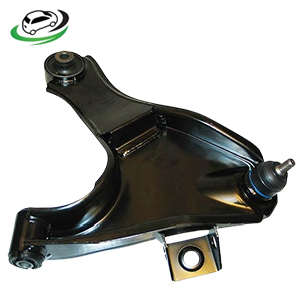-10%
Get Front LH Lower Control Arm Nissan Almera, Versa, March, Note, K13, E12, N17 545011HMOB
The front left-hand track control arm, also known as the lower control arm, is a crucial component of a vehicle’s suspension system. It plays a significant role in maintaining stability, controlling wheel movement, and supporting the weight of the vehicle. In this discussion, we’ll explore the benefits of the front LH track control arm and identify signs that indicate a need for replacement.
Benefits of the Front LH Lower Control Arm
-
Suspension Support and Stability:
- Weight Distribution: Lower control arms distribute the weight of the vehicle evenly across the suspension system, ensuring balanced handling and stability. This helps prevent excessive body roll during cornering and maintains tire contact with the road surface for improved traction.
- Resistance to Impact: Lower control arms absorb shocks and impacts from uneven road surfaces, potholes, or bumps, minimizing vibrations and jolts transmitted to the vehicle’s chassis. This enhances passenger comfort and reduces driver fatigue, especially on long journeys.
2. Steering Response and Handling:
- Responsive Steering: Lower control arms provide structural support to the steering knuckle and wheel assembly, facilitating precise steering response and feedback. This enhances driver confidence and control, particularly during high-speed maneuvers or sudden lane changes.
- Cornering Stability: Properly functioning lower control arms help maintain tire contact with the road during cornering, reducing body roll and improving stability. This enhances cornering grip and control, allowing for more precise and predictable handling.
3. Alignment and Suspension Geometry:
- Preservation of Suspension Geometry: Lower control arms play a key role in maintaining proper suspension geometry, including camber, caster, and toe angles. This ensures even tire wear, optimal wheel alignment, and consistent handling characteristics over time.
- Prevention of Premature Tire Wear: Misaligned or worn lower control arms can lead to irregular tire wear patterns, such as cupping or feathering, resulting in reduced tire lifespan and compromised handling performance. Regular inspection and adjustment of lower control arms help prevent premature tire wear.
4. Durability and Longevity:
- High-Quality Materials: Lower control arms are typically constructed from durable materials such as steel, aluminum, or composite alloys, offering excellent strength and corrosion resistance. This ensures long-term durability and reliability under various driving conditions.
- Resistance to Fatigue: Well-designed lower control arms undergo rigorous testing to withstand the stresses and forces encountered during normal driving, including braking, acceleration, and cornering. This helps prevent premature failure and ensures consistent performance over the vehicle’s lifespan.
5. Safety and Vehicle Dynamics:
- Enhanced Vehicle Stability: Lower control arms contribute to the overall stability and safety of the vehicle by maintaining proper wheel alignment and suspension geometry. This reduces the risk of loss of control, skidding, or rollover in emergency situations or adverse driving conditions.
- Optimized Brake Performance: Properly functioning lower control arms help ensure consistent tire contact with the road surface, allowing for optimal brake performance and stopping distances. This enhances vehicle safety and driver confidence, particularly during emergency braking maneuvers.
Signs a Car Needs a New Front LH Lower Control Arm
- Uneven Tire Wear:
- Excessive wear on the inner or outer edges of the front tires can indicate a problem with the lower control arm.
- Misalignment due to a worn or damaged control arm can cause the tires to tilt inward or outward, leading to uneven wear patterns.
- Steering Instability:
- A noticeable increase in steering play or looseness, particularly when driving over bumps or uneven surfaces, may indicate a worn control arm.
- Steering instability may also manifest as a wandering sensation or difficulty maintaining a straight line while driving.
- Suspension Noise:
- Squeaking, creaking, or clunking noises coming from the front suspension area, especially during cornering or over bumps, may indicate worn ball joints or bushings in the control arm.
- These noises often result from excessive play or movement in the control arm components.
- Vibration or Shimmying:
- Experiencing vibrations or a shimmying sensation in the steering wheel or vehicle chassis, especially at high speeds, can be a sign of a worn or damaged control arm.
- This vibration may occur due to improper alignment caused by a faulty control arm.
- Visible Damage or Corrosion:
- Inspect the front LH track control arm for visible signs of damage, such as cracks, bends, or corrosion.
- Rust or corrosion on the control arm can weaken its structural integrity, leading to premature failure.
- Alignment Issues:
- Persistent alignment problems, even after a professional alignment service, may indicate underlying issues with the front LH track control arm.
- Difficulty achieving or maintaining proper alignment settings can be a sign of a worn or damaged control arm.
Follow us on Facebook for more parts.





